John Renehan has been breeding Belclare sheep for over 30 years on the family farm, located on the outskirts of Johnstown, Co Kilkenny. His experience with the breed has been positive from the outset and this led to the formation of Violet Hill Belclares in 1995.
The flock has grown in recent years and now includes 150 Belclare sheep, which were joined to rams in 2019. Since the flock’s establishment, the focus has very much been on running Violet Hill Belclares in a commercial manner.
“I have been breeding Belclare sheep for over 30 years and am very much in it for the long haul. The market for Belclare rams isn’t as big as for some other breeds, so I have to ensure the sheep I sell work for commercial farmers. There is no room to molly-coddle rams and in any case, you can’t afford to do it in the sheep game”.
Breeding programme
The flock has an excellent maternal breeding profile. This is reflected in 2019-born lambs possessing an average €uro-Star replacement index value of €8.25, in contrast to a terminal index value of €0.59. This is still a relatively positive figure and is an area John has been focusing on improving.
“The Belclare ewes in the flock have sufficient levels of prolificacy and are good milkers. I find that the ewes that are very strong on prolificacy and milk yield can sometimes lack a bit on conformation and this often shows in carcase quality. That is not to say they (maternal traits) are ignored in any way – rather that the focus is on improving terminal traits while maintaining the ewes’ positive maternal traits. I select replacement females from twin litters and this seems to be maintaining the litter size at a little over two lambs per ewe, which is where I like it to be”.
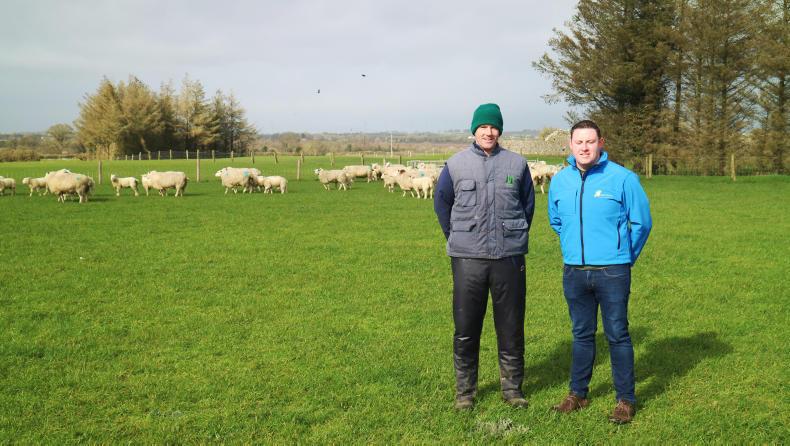
John Renehan, Violet Hill Belclares and Alan Bohan, Sheep Ireland.
To give an indication of performance, Alan Bohan, Sheep Ireland business analyst, reports the average birth weight across 218 lambs born in the pedigree flock in 2019 was 3.95kg and the average 40-day weight was 16.5kg. The average weaning weight was recorded at 36.6kg, ranging from 27kg to 47.5kg. These lambs ranged from 100 to 109 days old at weaning, giving an average daily gain of 300g per day.
I have been breeding Belclare sheep for over 30 years and am very much in it for the long haul
In terms of terminal traits, John is aiming to improve both growth rate and conformation. However, he explains that as there is a small gene pool in the Belclare breed, it is not just a matter of sourcing a ram and introducing his genetics to the flock.
“With the Belclare breed, you can’t just go over to France or the UK and source new breeding lines. You constantly have to keep an eye out for a risk of inbreeding. I find the Sheep Ireland inbreeding tool is probably the most valuable for me. I used nine rams in 2019 and all had green linkages. I try as far as possible to match ewes and rams that will complement both physical traits and bloodlines”.
Extensive records
The replacement and terminal figures for lambs born in 2019 had an average index accuracy of 45%, which is at the upper end of accuracy levels. This is driven by an extensive level of recording taking place and also by the fact that John has been keen to participate in breed improvement initiatives since Sheep Ireland was formed.
The flock was initially a member of the Maternal Lamb Producers Group (MALP) programme and recently, rams have been used in the CPT programme. For example, Violet Hill JR094747 has over 792 recorded progeny through the CPT, resulting in an index accuracy of 90% on the replacement index and 87% on the terminal index.
All records are collected in hardcopy form with the Sheep Ireland lambing notebook. John says he is aware of the new app for recording data, but feels that he needs to get accustomed to it before switching over from hardcopy records.
With the Belclare breed, you can’t just go over to France or the UK and source new breeding lines. You constantly have to keep an eye out for a risk of inbreeding
He aims to upload lambing records every couple of nights, if possible, so that he can ensure accuracy, while extensive records are also collected on health traits such as lameness, dag score and mastitis. The high level of recording has given the flock an impressive data quality index of 95.52%, which also highlights that a high level of performance recording can be achieved with hardcopy recording.
This performance underpinned Violet Hill Flock being awarded the FBD Highest Achieving LambPlus Flock 2019.
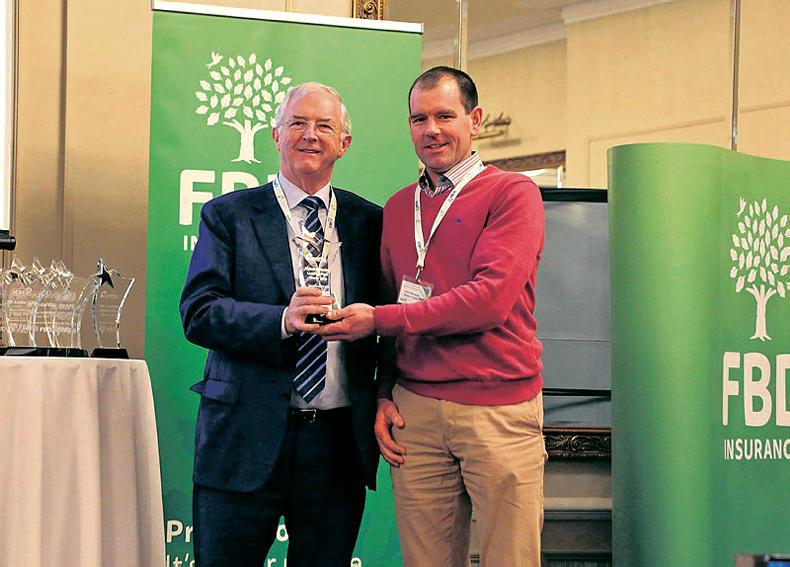
FBD chair Michael Berkery presenting John Rehehan with the FBD Highest Achieving LambPlus Flock 2019.
Flocks are nominated based on the replacement and terminal €uro-Star values of the lambs born in 2019, index accuracies and flock DQI, with the winner receiving €1,000 and both runners up receiving €500. Ornaith Clarke of Trojan Texels was awarded the Most Improved LambPlus Flock 2019 and the overall prize of €500 (four runners up received €250). Alan says the awards are open to all LambPlus members and are Sheep Ireland’s way of acknowledging the hard work and dedication of sheep breeders.
Current management
Lambing is split into three periods on the farm. There were 73 Belclare ewes (from 96 put to the ram) with an average litter size of 2.05 lambs lambed in early January, while a batch of commercial ewes with Belclare and Suffolk breeding had just finished lambing when we visited the farm a couple of weeks ago.
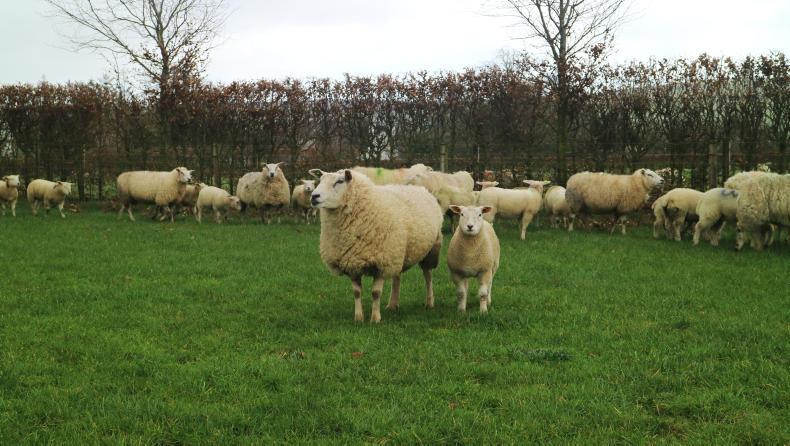
There is a complex breeding programme due to a narrow gene pool in the Belclare breed, with rams and ewes joined to complement physical and genetic attributes in the best possible manner.
The breeding programme for these ewes included joining 200 commercial ewes to rams for just nine days, commencing on 21 September 2019. This practice keeps a tight lambing spread without the need for sponging with 72 ewes going in lamb over the nine days.
Ewes not in-lamb are mated alongside yearling hoggets to lamb from 1 April onwards.
This approach works well for the farm, as it splits the labour requirement, improves cashflow by having sheep to trade throughout the year and allows the focus to remain on grass-based production, with the later lambing date normally coinciding with the Easter break and a significant increase in grass supplies.
Grass-based production
The aim is to get Belclare ewes and lambs outdoors as quick as possible after lambing, with ewes typically supplemented with concentrates at grass for five weeks. Lambs are offered a restricted level of creep at about 0.25kg per day, which is made possible through creep-grazing. Creep-feeding also helps in this regard, as it entices lambs to graze forward.
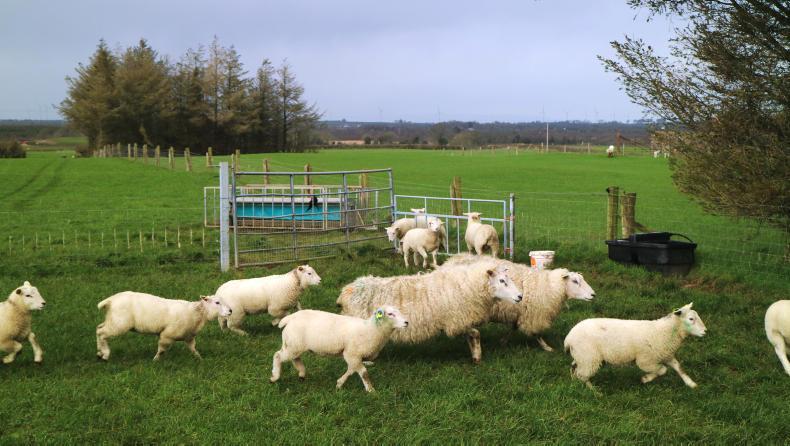
Lambs are creep-grazed ahead of ewes. This practice also facilitates creep being offered at a restricted level.
Once weaned, lambs are offered supplementation at a rate of 0.5kg concentrates. “I find this is the best balance between keeping lambs performing and having them fit to breed in their first year. As I said, it’s an all-sheep farm and the economics of heavy feeding don’t stack up, never mind the negative effect this would have on repeat business”.
No ewes or lambs in the later lambing flocks have traditionally been fed meal. As breeding yearling hoggets is back on the agenda this year, John may carry out restricted creep-feeding in lambs being reared by yearling hoggets.
Sales outlet
About 50% of males and females born make it to pedigree grade. This includes ewe lamb replacements retained on the farm. Guaranteeing repeat business comes to the fore again in this regard. It is also paramount in the commercial flock, with lambs castrated at birth using rubber rings to satisfy demand from a wholesale butcher run by Neil Tynan.
“I realise I am foregoing some lost performance in terms of growth rate, but hopefully a higher kill-out and greater ease in finishing male lambs later in the season compensates for this. In any case, the saying is ‘a customer is always right’”.
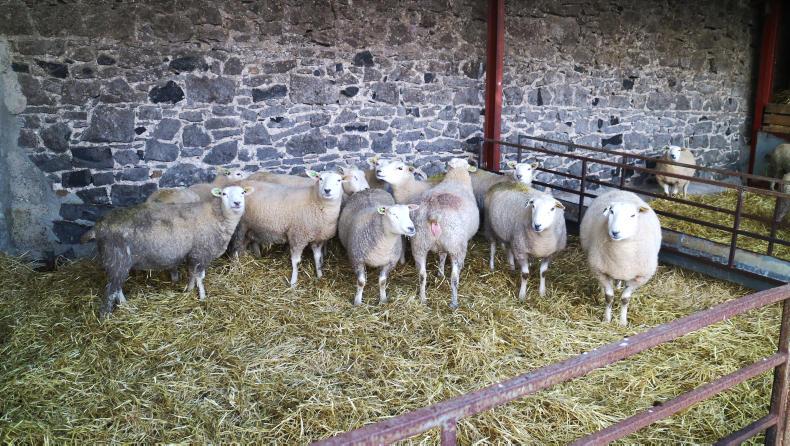
Yearling hoggets will lamb down from 1 April 2020. John switched to breeding them to reduce the difficulty of getting two-tooth hoggets in lamb.
Lambs are selected on a combination of physical traits and genetic indexes. John says that genetic evaluations are demanded by buyers of Belclare rams, but adds that no lambs with any question marks on physical attributes are retained, no matter how good their figures are.
The number of pedigree Belclare ewes has increased organically and stood at 96 ewes/ewe hoggets and 66 ewe lambs for breeding in 2019. A higher number of ewe lambs than required allows for further selection, with those not making the grade switched into the commercial flock.
Future plans
John hopes to take advantage of electronic recording in the future and has earmarked the €1,000 prize money he received from winning the LambPlus competition for the purchase of an EID reader. He is also hoping to upgrade his weighing crate to be in a position to weigh ewes and use this information to inform breeding decisions.
John has also developed an outlet in recent years for CharTex rams, with some buyers looking to source maternal and terminal rams from the one breeder. He will continue to monitor this market and may increase this flock if demand continues to grow.
In the short-term, Belclare lambs will be weaned early at 12 weeks of age. This will reduce grass demand, allowing the best quality grass to be offered to weaned lambs, while also replenishing grass supplies after a challenging spring to meet a sharp increase in demand from February and April lambing flocks.
Violet Hill Belclares was awarded the FBD Highest Achieving LambPlus Flock 2019.The flock excels on maternal breeding and is focusing on improving terminal traits.Ewes lamb in three groups to make the best use of labour and facilities.The Belclare flock is run commercially, with major importance placed on meeting the needs of commercial farmers and safeguarding repeat business.
John Renehan has been breeding Belclare sheep for over 30 years on the family farm, located on the outskirts of Johnstown, Co Kilkenny. His experience with the breed has been positive from the outset and this led to the formation of Violet Hill Belclares in 1995.
The flock has grown in recent years and now includes 150 Belclare sheep, which were joined to rams in 2019. Since the flock’s establishment, the focus has very much been on running Violet Hill Belclares in a commercial manner.
“I have been breeding Belclare sheep for over 30 years and am very much in it for the long haul. The market for Belclare rams isn’t as big as for some other breeds, so I have to ensure the sheep I sell work for commercial farmers. There is no room to molly-coddle rams and in any case, you can’t afford to do it in the sheep game”.
Breeding programme
The flock has an excellent maternal breeding profile. This is reflected in 2019-born lambs possessing an average €uro-Star replacement index value of €8.25, in contrast to a terminal index value of €0.59. This is still a relatively positive figure and is an area John has been focusing on improving.
“The Belclare ewes in the flock have sufficient levels of prolificacy and are good milkers. I find that the ewes that are very strong on prolificacy and milk yield can sometimes lack a bit on conformation and this often shows in carcase quality. That is not to say they (maternal traits) are ignored in any way – rather that the focus is on improving terminal traits while maintaining the ewes’ positive maternal traits. I select replacement females from twin litters and this seems to be maintaining the litter size at a little over two lambs per ewe, which is where I like it to be”.

John Renehan, Violet Hill Belclares and Alan Bohan, Sheep Ireland.
To give an indication of performance, Alan Bohan, Sheep Ireland business analyst, reports the average birth weight across 218 lambs born in the pedigree flock in 2019 was 3.95kg and the average 40-day weight was 16.5kg. The average weaning weight was recorded at 36.6kg, ranging from 27kg to 47.5kg. These lambs ranged from 100 to 109 days old at weaning, giving an average daily gain of 300g per day.
I have been breeding Belclare sheep for over 30 years and am very much in it for the long haul
In terms of terminal traits, John is aiming to improve both growth rate and conformation. However, he explains that as there is a small gene pool in the Belclare breed, it is not just a matter of sourcing a ram and introducing his genetics to the flock.
“With the Belclare breed, you can’t just go over to France or the UK and source new breeding lines. You constantly have to keep an eye out for a risk of inbreeding. I find the Sheep Ireland inbreeding tool is probably the most valuable for me. I used nine rams in 2019 and all had green linkages. I try as far as possible to match ewes and rams that will complement both physical traits and bloodlines”.
Extensive records
The replacement and terminal figures for lambs born in 2019 had an average index accuracy of 45%, which is at the upper end of accuracy levels. This is driven by an extensive level of recording taking place and also by the fact that John has been keen to participate in breed improvement initiatives since Sheep Ireland was formed.
The flock was initially a member of the Maternal Lamb Producers Group (MALP) programme and recently, rams have been used in the CPT programme. For example, Violet Hill JR094747 has over 792 recorded progeny through the CPT, resulting in an index accuracy of 90% on the replacement index and 87% on the terminal index.
All records are collected in hardcopy form with the Sheep Ireland lambing notebook. John says he is aware of the new app for recording data, but feels that he needs to get accustomed to it before switching over from hardcopy records.
With the Belclare breed, you can’t just go over to France or the UK and source new breeding lines. You constantly have to keep an eye out for a risk of inbreeding
He aims to upload lambing records every couple of nights, if possible, so that he can ensure accuracy, while extensive records are also collected on health traits such as lameness, dag score and mastitis. The high level of recording has given the flock an impressive data quality index of 95.52%, which also highlights that a high level of performance recording can be achieved with hardcopy recording.
This performance underpinned Violet Hill Flock being awarded the FBD Highest Achieving LambPlus Flock 2019.

FBD chair Michael Berkery presenting John Rehehan with the FBD Highest Achieving LambPlus Flock 2019.
Flocks are nominated based on the replacement and terminal €uro-Star values of the lambs born in 2019, index accuracies and flock DQI, with the winner receiving €1,000 and both runners up receiving €500. Ornaith Clarke of Trojan Texels was awarded the Most Improved LambPlus Flock 2019 and the overall prize of €500 (four runners up received €250). Alan says the awards are open to all LambPlus members and are Sheep Ireland’s way of acknowledging the hard work and dedication of sheep breeders.
Current management
Lambing is split into three periods on the farm. There were 73 Belclare ewes (from 96 put to the ram) with an average litter size of 2.05 lambs lambed in early January, while a batch of commercial ewes with Belclare and Suffolk breeding had just finished lambing when we visited the farm a couple of weeks ago.

There is a complex breeding programme due to a narrow gene pool in the Belclare breed, with rams and ewes joined to complement physical and genetic attributes in the best possible manner.
The breeding programme for these ewes included joining 200 commercial ewes to rams for just nine days, commencing on 21 September 2019. This practice keeps a tight lambing spread without the need for sponging with 72 ewes going in lamb over the nine days.
Ewes not in-lamb are mated alongside yearling hoggets to lamb from 1 April onwards.
This approach works well for the farm, as it splits the labour requirement, improves cashflow by having sheep to trade throughout the year and allows the focus to remain on grass-based production, with the later lambing date normally coinciding with the Easter break and a significant increase in grass supplies.
Grass-based production
The aim is to get Belclare ewes and lambs outdoors as quick as possible after lambing, with ewes typically supplemented with concentrates at grass for five weeks. Lambs are offered a restricted level of creep at about 0.25kg per day, which is made possible through creep-grazing. Creep-feeding also helps in this regard, as it entices lambs to graze forward.

Lambs are creep-grazed ahead of ewes. This practice also facilitates creep being offered at a restricted level.
Once weaned, lambs are offered supplementation at a rate of 0.5kg concentrates. “I find this is the best balance between keeping lambs performing and having them fit to breed in their first year. As I said, it’s an all-sheep farm and the economics of heavy feeding don’t stack up, never mind the negative effect this would have on repeat business”.
No ewes or lambs in the later lambing flocks have traditionally been fed meal. As breeding yearling hoggets is back on the agenda this year, John may carry out restricted creep-feeding in lambs being reared by yearling hoggets.
Sales outlet
About 50% of males and females born make it to pedigree grade. This includes ewe lamb replacements retained on the farm. Guaranteeing repeat business comes to the fore again in this regard. It is also paramount in the commercial flock, with lambs castrated at birth using rubber rings to satisfy demand from a wholesale butcher run by Neil Tynan.
“I realise I am foregoing some lost performance in terms of growth rate, but hopefully a higher kill-out and greater ease in finishing male lambs later in the season compensates for this. In any case, the saying is ‘a customer is always right’”.

Yearling hoggets will lamb down from 1 April 2020. John switched to breeding them to reduce the difficulty of getting two-tooth hoggets in lamb.
Lambs are selected on a combination of physical traits and genetic indexes. John says that genetic evaluations are demanded by buyers of Belclare rams, but adds that no lambs with any question marks on physical attributes are retained, no matter how good their figures are.
The number of pedigree Belclare ewes has increased organically and stood at 96 ewes/ewe hoggets and 66 ewe lambs for breeding in 2019. A higher number of ewe lambs than required allows for further selection, with those not making the grade switched into the commercial flock.
Future plans
John hopes to take advantage of electronic recording in the future and has earmarked the €1,000 prize money he received from winning the LambPlus competition for the purchase of an EID reader. He is also hoping to upgrade his weighing crate to be in a position to weigh ewes and use this information to inform breeding decisions.
John has also developed an outlet in recent years for CharTex rams, with some buyers looking to source maternal and terminal rams from the one breeder. He will continue to monitor this market and may increase this flock if demand continues to grow.
In the short-term, Belclare lambs will be weaned early at 12 weeks of age. This will reduce grass demand, allowing the best quality grass to be offered to weaned lambs, while also replenishing grass supplies after a challenging spring to meet a sharp increase in demand from February and April lambing flocks.
Violet Hill Belclares was awarded the FBD Highest Achieving LambPlus Flock 2019.The flock excels on maternal breeding and is focusing on improving terminal traits.Ewes lamb in three groups to make the best use of labour and facilities.The Belclare flock is run commercially, with major importance placed on meeting the needs of commercial farmers and safeguarding repeat business. 







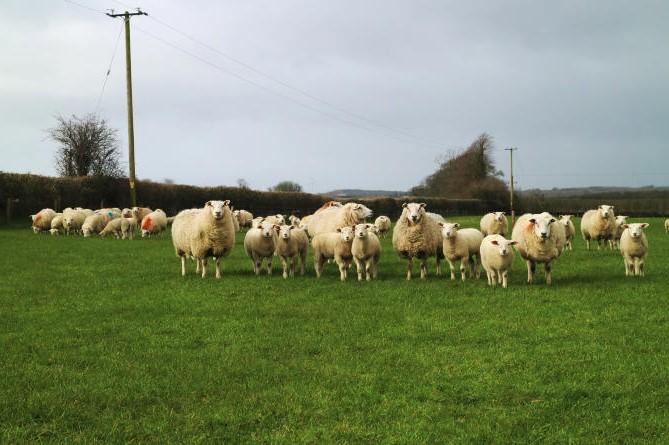
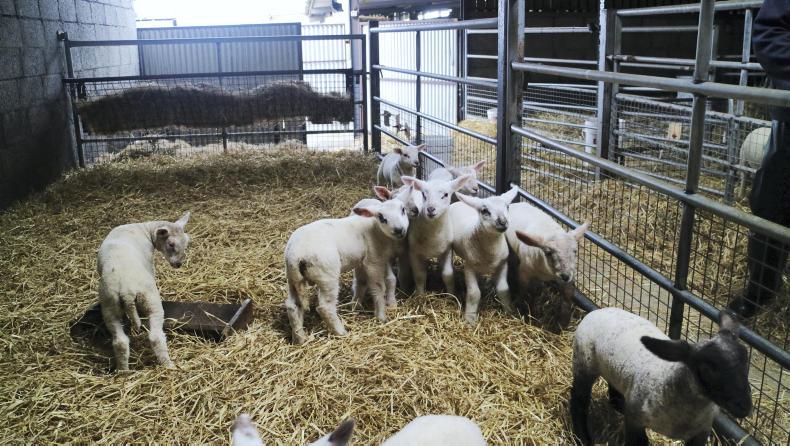
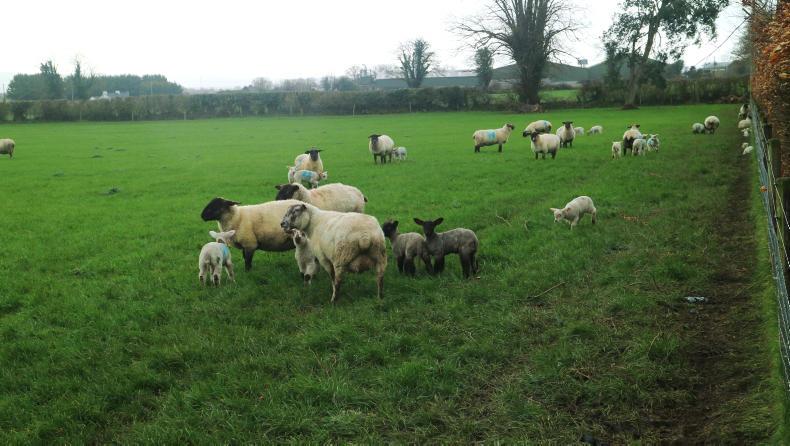




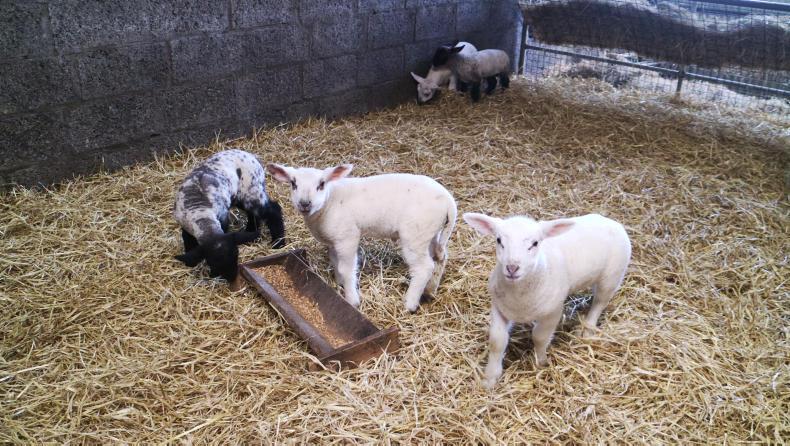


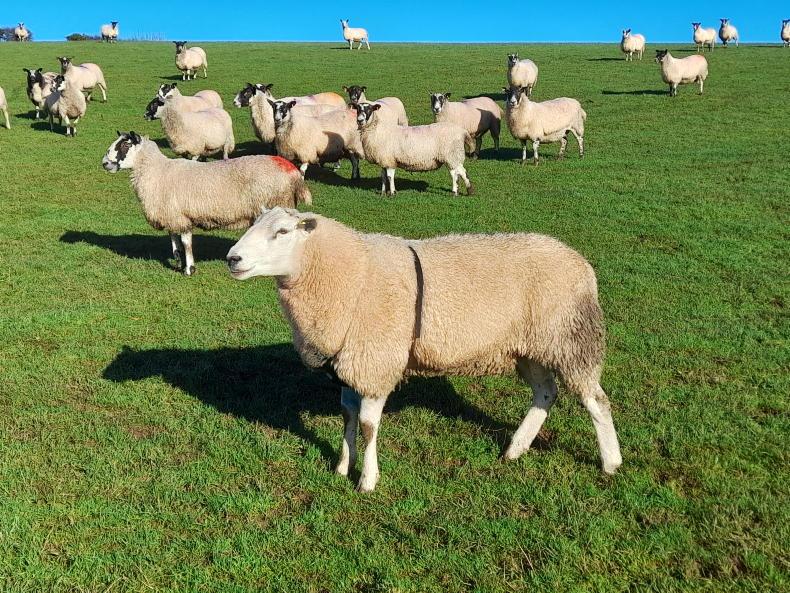


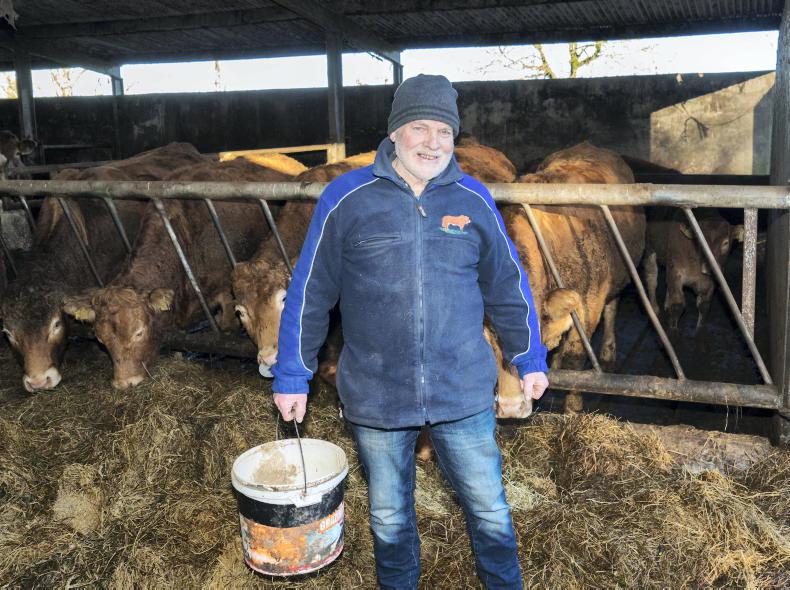

SHARING OPTIONS